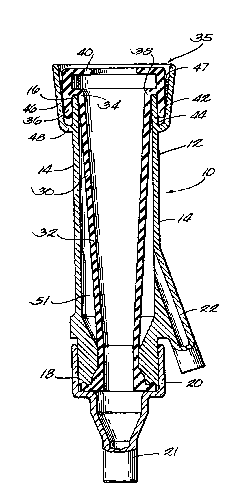Some of the information on this Web page has been provided by external sources. The Government of Canada is not responsible for the accuracy, reliability or currency of the information supplied by external sources. Users wishing to rely upon this information should consult directly with the source of the information. Content provided by external sources is not subject to official languages, privacy and accessibility requirements.
Any discrepancies in the text and image of the Claims and Abstract are due to differing posting times. Text of the Claims and Abstract are posted:
| (12) Patent: | (11) CA 1286250 |
|---|---|
| (21) Application Number: | 1286250 |
| (54) English Title: | SILICONE MILKING UNIT |
| (54) French Title: | ELEMENT EN SILICONE POUR LA TRAITE |
| Status: | Expired and beyond the Period of Reversal |
| (51) International Patent Classification (IPC): |
|
|---|---|
| (72) Inventors : |
|
| (73) Owners : |
|
| (71) Applicants : |
|
| (74) Agent: | SMART & BIGGAR LP |
| (74) Associate agent: | |
| (45) Issued: | 1991-07-16 |
| (22) Filed Date: | 1987-03-13 |
| Availability of licence: | N/A |
| Dedicated to the Public: | N/A |
| (25) Language of filing: | English |
| Patent Cooperation Treaty (PCT): | No |
|---|
| (30) Application Priority Data: | None |
|---|
ABSTRACT OF THE DISCLOSURE
Disclosed herein is a teat cup assembly for
use with a silicone liner. The one piece shell for the
teat cup assembly has an integral peripheral protecting
wall which projects beyond the end of the cylindrical
shell wall and forms a recess for receiving the cuff of
the liner. The flange protects the end of the
inflation from damage caused by impact with the floor
or other articles in the milking parlor. No mechanical
parts are required to maintain the liner and assembly
in the shell.
Note: Claims are shown in the official language in which they were submitted.
Note: Descriptions are shown in the official language in which they were submitted.

2024-08-01:As part of the Next Generation Patents (NGP) transition, the Canadian Patents Database (CPD) now contains a more detailed Event History, which replicates the Event Log of our new back-office solution.
Please note that "Inactive:" events refers to events no longer in use in our new back-office solution.
For a clearer understanding of the status of the application/patent presented on this page, the site Disclaimer , as well as the definitions for Patent , Event History , Maintenance Fee and Payment History should be consulted.
| Description | Date |
|---|---|
| Inactive: Reversal of expired status | 2012-12-05 |
| Time Limit for Reversal Expired | 2008-07-16 |
| Letter Sent | 2007-07-16 |
| Letter Sent | 2002-01-23 |
| Letter Sent | 2002-01-23 |
| Grant by Issuance | 1991-07-16 |
There is no abandonment history.
| Fee Type | Anniversary Year | Due Date | Paid Date |
|---|---|---|---|
| MF (category 1, 7th anniv.) - standard | 1998-07-16 | 1998-07-06 | |
| MF (category 1, 8th anniv.) - standard | 1999-07-16 | 1999-06-29 | |
| Registration of a document | 2000-05-17 | ||
| MF (category 1, 9th anniv.) - standard | 2000-07-17 | 2000-06-23 | |
| MF (category 1, 10th anniv.) - standard | 2001-07-16 | 2001-07-12 | |
| MF (category 1, 11th anniv.) - standard | 2002-07-16 | 2002-07-11 | |
| MF (category 1, 12th anniv.) - standard | 2003-07-16 | 2003-06-13 | |
| MF (category 1, 13th anniv.) - standard | 2004-07-16 | 2004-05-04 | |
| MF (category 1, 14th anniv.) - standard | 2005-07-18 | 2005-05-09 | |
| MF (category 1, 15th anniv.) - standard | 2006-07-17 | 2006-05-11 |
Note: Records showing the ownership history in alphabetical order.
| Current Owners on Record |
|---|
| AVON HI-LIFE, INC. |
| Past Owners on Record |
|---|
| STEVEN J. KUPRES |